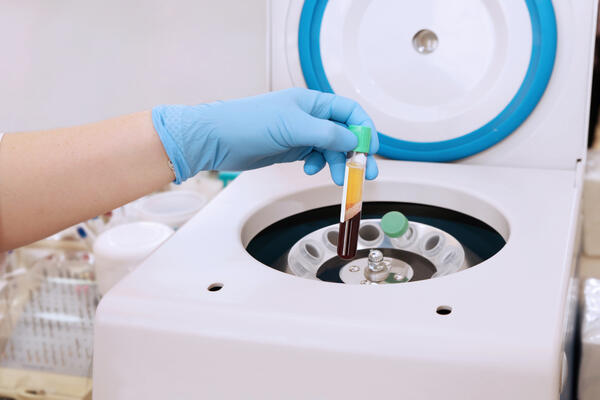
Exploring PRP Therapy For Injury Recovery Among Seniors
A particular therapy has emerged as a frontrunner in the quest for advanced medical treatments that enhance healing and recovery, especially for the senior population. Platelet-rich plasma (PRP) therapy, while not new to the medical world, has witnessed a resurgence in interest because of its promising outcomes. With an aging population and increasing demands for non-surgical treatments, understanding how PRP can aid seniors is paramount.
Let's delve into its significance, applications, and considerations. Read on to learn more.
The Science Behind PRP Therapy
At its core, PRP therapy revolves around the body’s inherent ability to heal. Blood, which courses through our veins, is more than just a life-sustaining fluid; it’s a reservoir of healing potential. To grasp the concept of PRP therapy fully, it's essential to delve into its primary constituents:
- Platelets: Known primarily for clotting, platelets also release growth factors essential for cellular repair and regeneration.
- Plasma: This liquid component of blood aids in transporting cells, nutrients, hormones, and waste products to and from our body cells.
By isolating and concentrating the platelets in plasma, PRP is produced. When reintroduced into the injured areas, this concentrated solution aims to enhance the body’s natural healing processes.
Notably, given the popularity of PRP in injury recovery, many systems like the Selphyl Ortho have been introduced to the market. These systems focus on harnessing the benefits of platelet-rich plasma, tailoring the approach to orthopedic conditions. Given the commonality of orthopedic issues among seniors, such as osteoarthritis or tendonitis, solutions like these hold immense promise.
Benefits Of PRP For Seniors
Elderly patients often face a dichotomy: the need for effective treatments and the risks associated with invasive procedures. This is where PRP therapy becomes invaluable. The following are some key benefits of platelet-rich plasma for injury recovery among the senior population:
- Natural Healing: Unlike treatments that introduce foreign substances into the body, PRP utilizes the patient’s own blood. This minimizes risks of adverse reactions—a crucial consideration for seniors with potentially compromised immune systems.
- Reduced Need for Surgery: Many seniors are wary of surgeries, given the associated risks and prolonged recovery times. PRP presents a potential non-surgical alternative, especially for osteoarthritis or tendinitis, which might require more invasive interventions.
- Faster Recovery: Time is of the essence, especially for seniors. If PRP can accelerate the healing process through its concentrated growth factors, it could mean less pain, less immobility, and a quicker return to normal life.
Overall, PRP therapy is especially beneficial for seniors because it can help improve their quality of life and allow them to stay active and independent.
Applicability Of PRP For Common Senior Injuries
The golden years, while filled with wisdom and memories, also bring a heightened susceptibility to injuries and ailments. Below are common senior injuries where PRP therapy might be beneficial:
- Osteoarthritis: This debilitating joint disease affects millions globally. As cartilage wears away, bones grind against each other, causing pain and immobility. PRP’s potential to reduce inflammation and stimulate cartilage repair offers a gleam of optimism.
- Tendonitis: Seniors with years of wear and tear often suffer from inflamed tendons. The inherent slow-healing nature of tendons can prolong the agony. PRP therapy, in delivering growth factors, might expedite the healing process of tendonitis.
- Muscle Injuries: Whether from a slip or overexertion, muscle strains are common among the elderly. With PRP’s promise to hasten muscle tissue repair, recovery periods could be significantly reduced.
PRP therapy is a relatively new treatment, and more research is needed to determine its long-term effectiveness. However, the existing research suggests that PRP therapy can be a safe and effective way to treat various common senior injuries.
The Challenges And Considerations Of Using PRP Therapy
Like any treatment, PRP comes with its own set of challenges and considerations. Below are the challenges and considerations that seniors should remember when using PRP therapy:
- Cost: Financial constraints are real. Without comprehensive insurance coverage, PRP treatments might remain elusive for many seniors.
- Variability: Biology is diverse. There’s no standardized method for preparing and administering the injections. This can lead to variability in the quality and effectiveness of PRP treatments. While some seniors might experience transformative results with PRP, others might find it less effective.
- Limited Long-term Studies: The intersection of PRP therapy and geriatric care is still a burgeoning field. As such, there’s limited long-term efficacy and safety data specifically for seniors.
Overall, PRP therapy is a safe and effective treatment for various conditions, but seniors need to be aware of these challenges and considerations before undergoing treatment.
Conclusion
PRP therapy, offering potential benefits for seniors, bridges the gap between conservative treatments and invasive procedures. As research continues, the effectiveness of platelet-rich plasma is likely to become more pronounced, presenting seniors with a holistic approach to healing. By keeping the information mentioned above in mind, seniors will understand the growing significance of PRP in the realm of senior healthcare.